Variegated Japanese Spindle Euonymus japonicus 'Microphyllus Albovariegatus' (v)
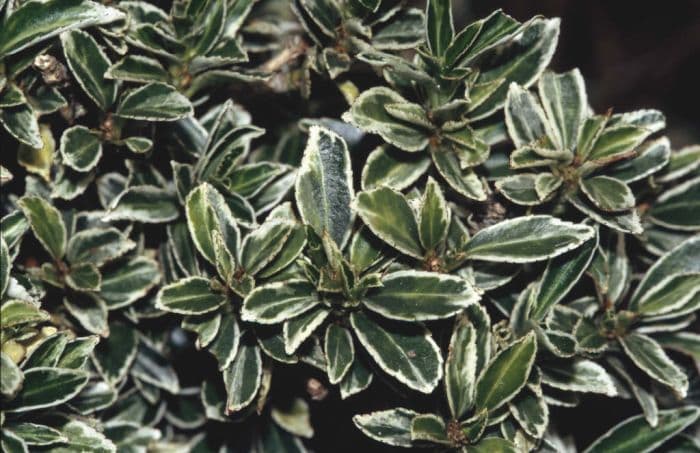
ABOUT
The Euonymus japonicus 'Microphyllus Albovariegatus', commonly known as Variegated Boxleaf Euonymus, is an ornamental plant notable for its striking foliage. The leaves are small and densely packed together, creating a lush texture. Each leaf exhibits a beautiful variegation, meaning it has a pattern of two or more colors. The predominant color is a deep green that provides a rich backdrop for the creamy white to yellow edges that trace the leaf margins. This variegation can create a shimmering effect when the leaves move in the breeze. The plant maintains a neat, bushy appearance, contributing to its popularity in formal gardens where it is often used for low hedges or as a decorative specimen. It may also bear inconspicuous flowers that are typically not the main attraction when compared to its variegated foliage. Overall, the appearance of the Variegated Boxleaf Euonymus is one of refined beauty, marked by its small, variegated leaves which offer visual interest and a sophisticated aesthetic for gardeners and landscapers.
About this plant
 Names
NamesFamily
Celastraceae.
Synonyms
Variegated Small-Leaf Japanese Euonymus, White-Margined Winter Creeper, Dwarf Japanese Spindle Bush, Variegated Japanese Euonymus.
Common names
Euonymus japonicus 'Microphyllus Albovariegatus'
 Toxicity
ToxicityTo humans
Variegated Japanese spindle is considered moderately toxic to humans. If ingested, it can cause symptoms such as nausea, vomiting, diarrhea, weakness, and chills. Ingesting the berries can be particularly hazardous, potentially leading to more severe symptoms.
To pets
Variegated Japanese spindle is also toxic to pets, such as dogs and cats. Ingestion can result in symptoms like vomiting, diarrhea, abdominal pain, weakness, and in severe cases, seizures or heart problems. It is important to prevent pets from chewing on the plant, as even small amounts can cause adverse effects.
 Characteristics
CharacteristicsLife cycle
Perennials
Foliage type
Evergreen
Color of leaves
Variegated
Height
2-3 feet (0.6-0.9 meters)
Spread
2-3 feet (0.6-0.9 meters)
Plant type
Shrub
Hardiness zones
6-9
Native area
Japan
Benefits
 General Benefits
General Benefits- Landscape enhancement - The variegated leaves of Japanese Spindle offer a visual appeal and can brighten up garden spaces.
- Low maintenance - Japanese Spindle requires minimal care once established, making it ideal for busy gardeners.
- Drought tolerance - It has the ability to withstand dry conditions after being well-established, which is beneficial in xeriscaping or regions with water restrictions.
- Hedge or topiary use - The dense growth habit makes it suitable for sculpting into hedges or topiary forms, providing structure in garden design.
- Seasonal interest - Its foliage provides year-round interest, with white and green variegation adding contrast against other plants.
 Medical Properties
Medical PropertiesThis plant is not used for medical purposes.
 Air-purifying Qualities
Air-purifying QualitiesThis plant is not specifically known for air purifying qualities.
 Other Uses
Other Uses- Compact evergreen hedge: Microphyllus Albovariegatus can be sheared into small, dense hedges perfect for bordering walkways or garden beds given its compact growth habit.
- Topiary plant: Due to its dense foliage and ability to tolerate pruning, it's used in creating topiaries in various shapes for formal gardens.
- Visual interest in winter gardens: With its variegated leaves, it adds color and texture to otherwise barren winter landscapes.
- Coastal landscapes: This plant is suitable for seaside gardens since it can withstand salt spray better than many other plants.
- Container planting: It can thrive in pots and containers, making it a good choice for patios, balconies, and terrace gardens.
- Bonsai: With its small leaves and the ability to adapt to pruning, it's a candidate for creating bonsai trees.
- Erosion control on slopes: Its root system helps stabilize soil on slopes and banks, reducing soil erosion.
- Foundation planting: Its small size makes it ideal for planting along house foundations without the fear of it growing too large.
- Oriental garden design: It complements the style of oriental gardens, fitting well with the design principles of simplicity and balance.
- Wildlife support: Although not its main purpose, it can offer some shelter to small wildlife such as birds and beneficial insects.
Interesting Facts
 Feng Shui
Feng ShuiThe Variegated Japanese Euonymus is not used in Feng Shui practice.
 Zodiac Sign Compitability
Zodiac Sign CompitabilityThe Variegated Japanese Euonymus is not used in astrology practice.
 Plant Symbolism
Plant Symbolism- Resilience: The Euonymus japonicus 'Microphyllus Albovariegatus', commonly known as the variegated Japanese spindle, is a hardy plant that can thrive in various conditions, symbolizing the ability to withstand adversity.
- Adaptability: This variety of Japanese spindle has a variegated foliage that reflects its ability to adapt to different environments, similar to how individuals might adapt to changing circumstances in life.
- Purity: The white variegation on the leaves can be seen as a symbol of purity and innocence.
- Versatility: Japanese spindle can be used in many different types of garden designs, symbolizing versatility and flexibility in use and placement.
 Water
WaterThe Japanese euonymus should be watered thoroughly when the top inch of the soil feels dry to the touch, typically once a week, but this may vary depending on climate conditions and soil type. The goal is to maintain evenly moist soil; it's essential to avoid waterlogging as it can lead to root rot. Each watering session should provide enough water to soak the root zone, which could be around 1 to 2 gallons for a medium-sized plant in a garden setting. During hot, dry periods, watering frequency may increase, and in winter, it should be reduced as the plant's growth slows down.
 Light
LightThe Japanese euonymus thrives best in full sun to partial shade. It is adaptable but will have the best variegation and healthiest growth with bright, indirect light or several hours of direct sunlight per day. It suits being planted in a spot that receives morning sun and afternoon shade, particularly in hotter climates to prevent leaf scorch.
 Temperature
TemperatureThe Japanese euonymus is hardy and can tolerate a range of temperatures; it can survive minimum temperatures down to about 0°F and maximum temperatures well over 100°F. However, its ideal growing conditions would be in temperatures ranging from 50°F to 75°F. This shrub is well-suited for outdoor growth in USDA hardiness zones 6 through 9.
 Pruning
PruningPruning the Japanese euonymus is essential for maintaining a neat shape and promoting healthy growth; it can be done once or twice a year, typically in late winter or early spring before new growth starts. Pruning may also be necessary during the summer to remove any dead or damaged branches or to control the size of the plant. The best time for heavier pruning is during the dormant season to minimize stress on the plant.
 Cleaning
CleaningAs needed
 Soil
SoilVariegated Japanese Spindle prefers well-draining soil with a mix of loam, peat, and coarse sand, and appreciates a balance of moisture. The ideal soil pH for this plant ranges between 6.0 to 7.5, slightly acidic to neutral. A commercial potting mix modified with additional perlite or sand can work well.
 Repotting
RepottingThe Variegated Japanese Spindle should be repotted every 2-3 years or when it becomes root-bound. Repotting in the springtime allows the plant to recover during the growing season.
 Humidity & Misting
Humidity & MistingThe Variegated Japanese Spindle is adaptable but prefers moderate humidity levels. Average indoor humidity is often suitable, but avoid placing it in excessively dry environments.
 Suitable locations
Suitable locationsIndoor
Provide bright indirect light, moderate watering, and average room humidity.
Outdoor
Plant in partial shade, shelter soil with mulch, and water regularly.
Hardiness zone
6-9 USDA
 Life cycle
Life cycleEuonymus japonicus 'Microphyllus Albovariegatus', commonly known as Variegated Japanese Spindle, begins its lifecycle as a seed. Upon germination, the seedling emerges and gradually develops into a juvenile plant, establishing a root system and foliage. As it matures, the plant enters a vegetative state where it experiences most of its growth, developing distinctive small, variegated leaves and a compact bushy form. This stage can last several years, during which the plant may be pruned to maintain shape. The adult phase is marked by the plant's ability to reproduce; it bears small, inconspicuous greenish-white flowers in late spring or early summer, which are often followed by pinkish fruit. Over time, the Variegated Japanese Spindle may slow its growth, potentially reaching senescence while still providing visual interest with its evergreen variegated foliage.
 Propogation
PropogationPropogation time
Spring-Early Summer
Propogation: The most popular method of propagating the Euonymus japonicus 'Microphyllus Albovariegatus', also known as the Variegated Small-Leaf Japanese Spindle, is through semi-hardwood cuttings. This is typically done in the late summer. Growers select healthy stems from the current year's growth and cut sections about 4 to 6 inches (approximately 10 to 15 centimeters) long. Each cutting should have several leaves but the lower half of the cutting should be stripped of leaves before being placed into a rooting medium. The medium commonly consists of a mixture of peat and perlite or sand to provide good drainage and aeration. The cuttings should be kept under high humidity, with gentle warming of the rooting area if possible, and should root within 4 to 8 weeks. Once rooted, the new plants can be gradually acclimated to less humid conditions and grown on until they are ready to be transplanted to their permanent location.
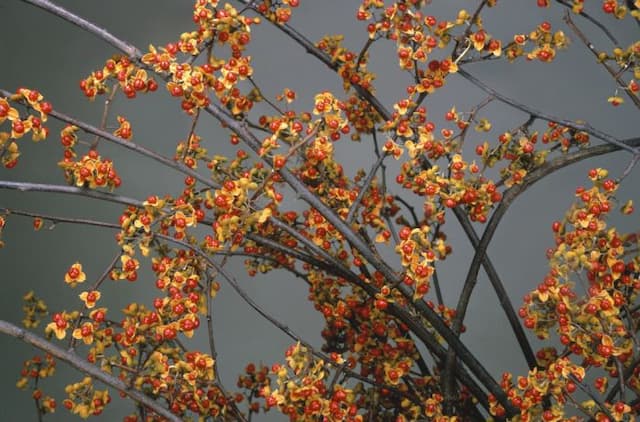
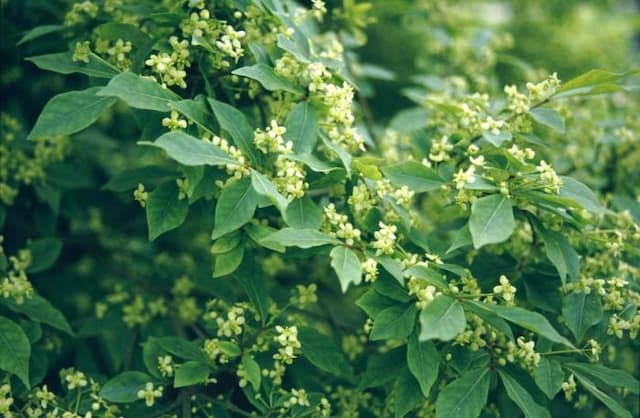
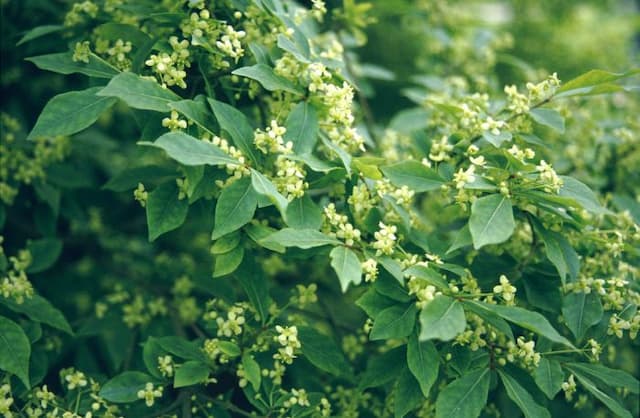

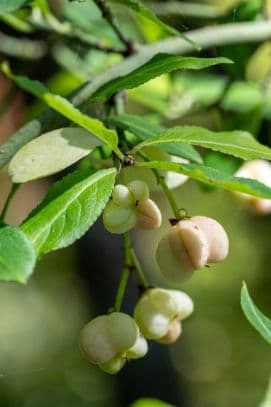
![Spindle [Blondy]](/_next/image?url=https%3A%2F%2Fplants-admin.emdemapps.com%2Fimages%2Fplants%2F%2Fimages%2F604b642f54add.png&w=640&q=75)


